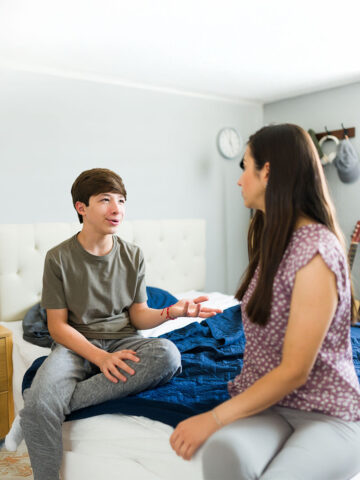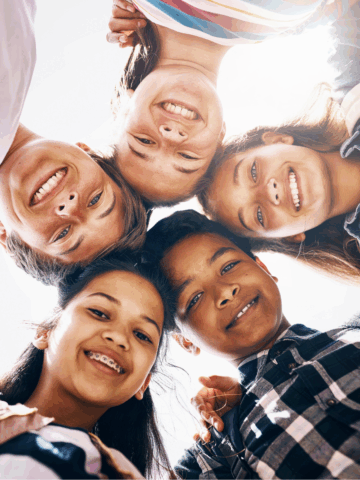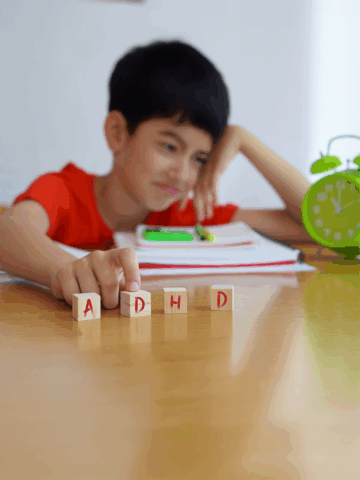Based on a podcast conversation with Dr. Sarah Ruiz, pediatric psychologist at Rady Children’s Health, formerly CHOC
Kids and mindfulness for stress relief and resilience
Mindfulness has become a buzzword in wellness circles, praised for its benefits in reducing stress and improving focus, but is it truly suitable for children? As mental health challenges among youth continue to rise, many parents and educators are turning to mindfulness as a potential tool for emotional regulation and resilience.
Dr. Sarah Ruiz, pediatric psychologist at Rady Children’s Health, discusses the appropriateness of mindfulness practices for kids through the lens of a pediatric psychologist, offering evidence-based insights and practical strategies for introducing mindfulness in age-appropriate, meaningful ways.
What is mindfulness, exactly, and how does it relate to stress?
Mindfulness is the practice of being fully present and aware of the current moment with acceptance and without judgment. It involves noticing your physical sensations, emotions, and thoughts without getting caught up in them, an often difficult but valuable skill to develop. Often, stress is at the root of those emotions and thoughts.
Dr. Ruiz said stress can be both helpful and harmful. In small doses, it can motivate kids to focus and perform better, like studying harder for an exam. However, prolonged chronic stress is different. It takes a toll on the body and mind, often showing up as fatigue, muscle tension, irritability or anxiety.
For younger children, this may look like increased crankiness, tiredness, or constant questioning and seeking reassurance. For teens, heightened irritability is common. These are all signs that ongoing stress is affecting their well-being.
“I’ve noticed this a lot more with social media and the news. Kids pick up on little things from the news or hear about it from social media and then they can really get stuck on it, just wondering what’s going to happen next, what is this thing, what about this other thing they heard online,” she notes.
The “five senses” exercise and other mindfulness strategies
Mindfulness is a versatile skill that benefits people of all ages and can be easily adapted for kids. While long meditations may feel overwhelming at first, families can build mindfulness into daily routines in fun, simple ways, especially with younger children.
One effective technique is the “five senses” exercise, which helps kids and teens focus on the present by noticing five things they see, four they feel, three they hear, two they smell, and one they taste. Practicing this together can calm the mind, reduce stress, and shift attention away from worries about the past or future.
“For little kids, that might be a bit of a harder exercise to sit through. But, you can integrate aspects of it,” advises Dr. Ruiz. “For example, doing a mindful walk, making sure to leave your earbuds at home and just be present as you’re walking. Notice what it feels like to be in your body, physically moving in that moment, but also notice the details around you. Help your kids notice the trees, the colors of the leaves. Maybe some of the colors or details of the homes in the neighborhood, what it smells like outside, things they’re hearing.”
Why mindfulness needs to be a daily routine, and how best to approach it
One of the most effective ways to build mindfulness is by making it a regular part of your daily routine. It doesn’t require a long meditation; just a quick morning check-in or a brief five-senses exercise can be enough. Prioritizing these moments as part of your own self-care can also set a positive example for kids and teens. When mindfulness is framed as a shared, fun family activity rather than a solo task, children are more likely to engage and benefit from the practice.
Dr. Ruiz also recommends some smartphone apps that can be helpful. Headspace is a well-known mindfulness app, and it now offers resources for younger kids through a partnership with Sesame Street, including content featuring characters like Cookie Monster. Parents can also explore the Sesame Street Workshop website, which provides a variety of helpful games, activities, and worksheets.
Dr. Ruiz also reinforces the fact that parents need to practice mindfulness and ensure they are in a good mental and physical state to take proper care of their children. The “put your oxygen mask on first” concept.
“I think one of the toughest things as a pediatric psychologist is working with parents and helping them put first their own well-being and self-care. It is so true that you have to be able to be well yourself in order to be a great caregiver to your child. Prioritizing mindfulness or any other relaxation as part of self-care is key,” she urges.
Get more expert health advice delivered to your inbox monthly by subscribing to the KidsHealth newsletter here.
Get mental health resources from CHOC pediatric experts
The mental health team at CHOC curated the following resources on mental health topics common to kids and teens, such as depression, anxiety, suicide prevention and more.






